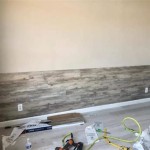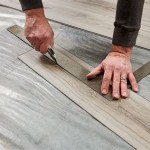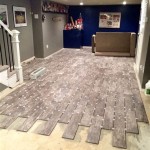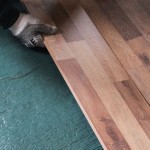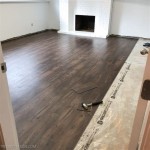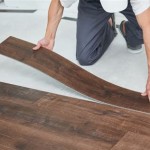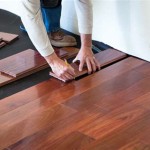Can You Waterproof Subfloor?
Water damage can be a costly and devastating problem for homeowners, particularly when it affects the subfloor. A subfloor is the structural layer beneath the finished flooring, providing support and stability. When water seeps into the subfloor, it can cause the wood to rot, warp, and buckle, leading to costly repairs.
Waterproofing your subfloor is crucial to prevent these issues and protect your home from water damage. However, some misconceptions and complexities surround the topic of waterproofing subfloors.
Can You Waterproof a Subfloor?
Yes, it is possible to waterproof a subfloor. Waterproofing involves applying a protective coating or membrane to the subfloor's surface, creating a barrier against water penetration. This barrier prevents water from being absorbed into the wood, preventing damage.
Types of Waterproofing Methods
Several waterproofing methods are available, each with its advantages and disadvantages:
- Liquid Membrane: A liquid applied to the subfloor that dries to form a seamless, waterproof barrier.
- Sheet Membrane: A sheet-like material applied to the subfloor, providing a physical barrier against water.
- Roll-On Waterproofing: A thick, tar-like substance rolled onto the subfloor, creating a water-resistant layer. li>Self-Adhesive Matting: A mat-like material with an adhesive backing applied to the subfloor, providing a waterproof and cushioned layer.
Benefits of Subfloor Waterproofing
Waterproofing your subfloor offers several significant benefits:
- Prevents Water Damage: A waterproof subfloor acts as a barrier against water, preventing absorption and damage.
- Protects Against Leaks: If a pipe or appliance leaks, a waterproof subfloor minimizes the risk of water spreading and causing damage.
- Improves Floor Stability: By preventing water damage, waterproofing maintains the subfloor's structural integrity, resulting in a more stable and durable floor.
- Increases Home Value: A waterproof subfloor is a valuable feature for homes, as it protects against costly repairs and improves overall property value.
Considerations for Waterproofing
While waterproofing a subfloor is advantageous, there are a few essential considerations:
- Cost: The cost of waterproofing a subfloor varies depending on the method chosen and the size of the area.
- Installation: Waterproofing a subfloor requires specialized knowledge and skills. Hiring a professional is recommended for proper installation.
- Drying Time: Some waterproofing materials require a drying period before installing the finished flooring.
- Moisture Control: Waterproofing a subfloor does not eliminate the need for proper moisture control in the surrounding environment. It is essential to address any sources of moisture or humidity to prevent potential damage.
Conclusion
Waterproofing your subfloor is a crucial step in protecting your home from water damage and ensuring the longevity of your flooring. By understanding the available methods, benefits, and considerations, you can make an informed decision about waterproofing your subfloor and safeguard your property from costly repairs.

Waterproofing Subfloor Best Methods You Can Use Mellowpine

Thermaldry Basement Flooring Systems Waterproof

Waterproofing Subfloor Best Methods You Can Use Mellowpine

How To Waterproof A Bathroom Floor Using Schluter Ditra Underlayment Over Wood Subfloor

How To Waterproof A Floor The Home

All In One Single Dimple Subfloor Sual

Waterproofing Subfloor Best Methods You Can Use Mellowpine

Waterproofing Subfloor Best Methods You Can Use Mellowpine

All In One Single Dimple Subfloor Sual

Residential Wood Floor Sual
See Also
